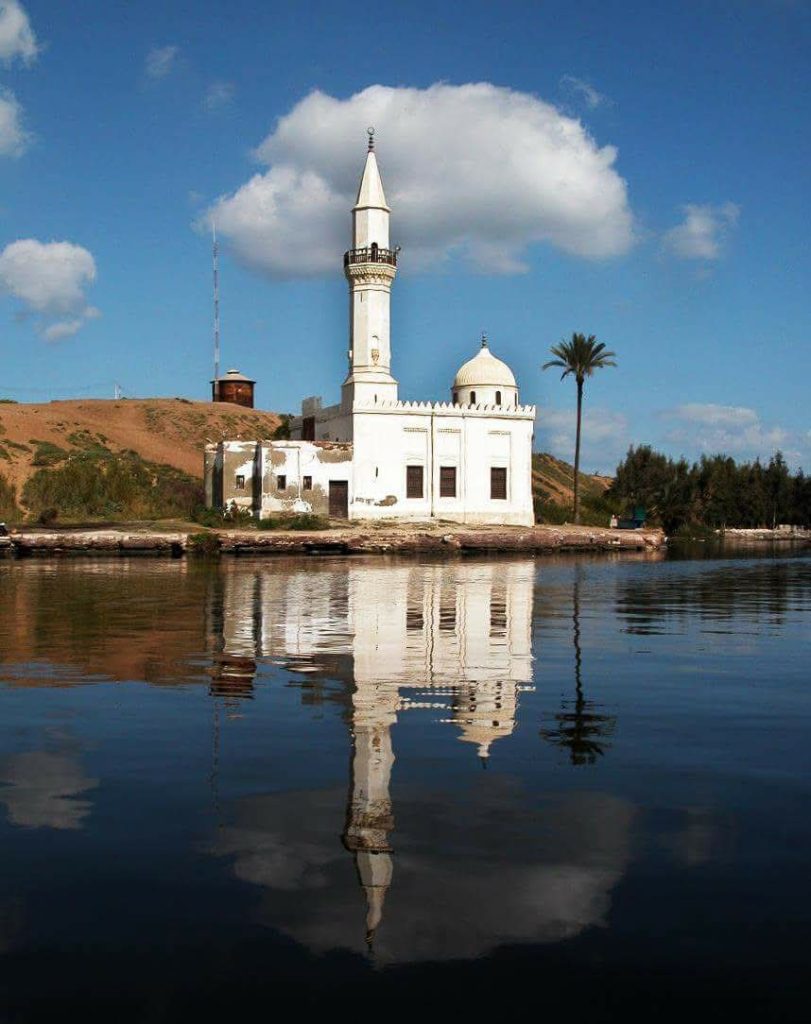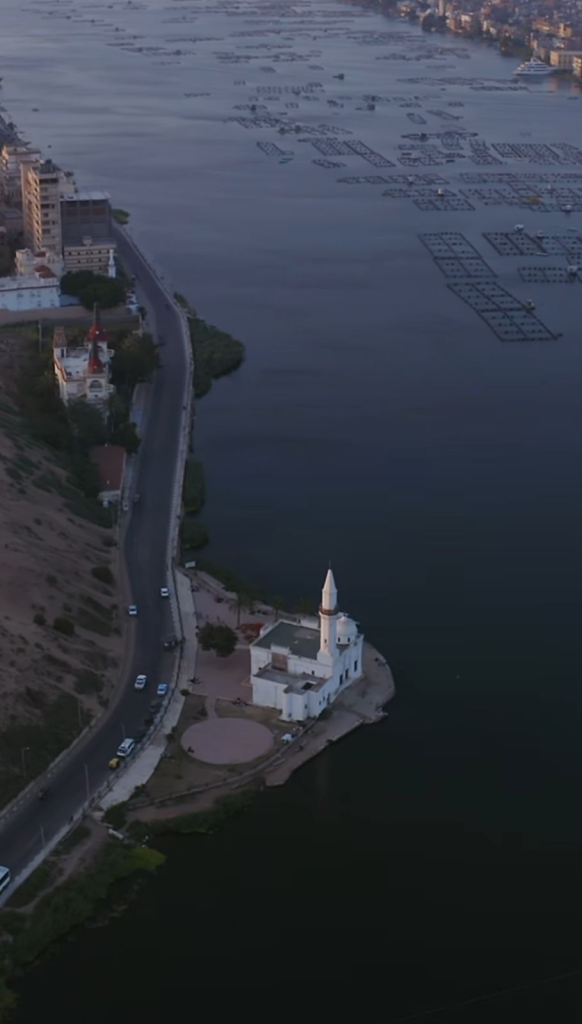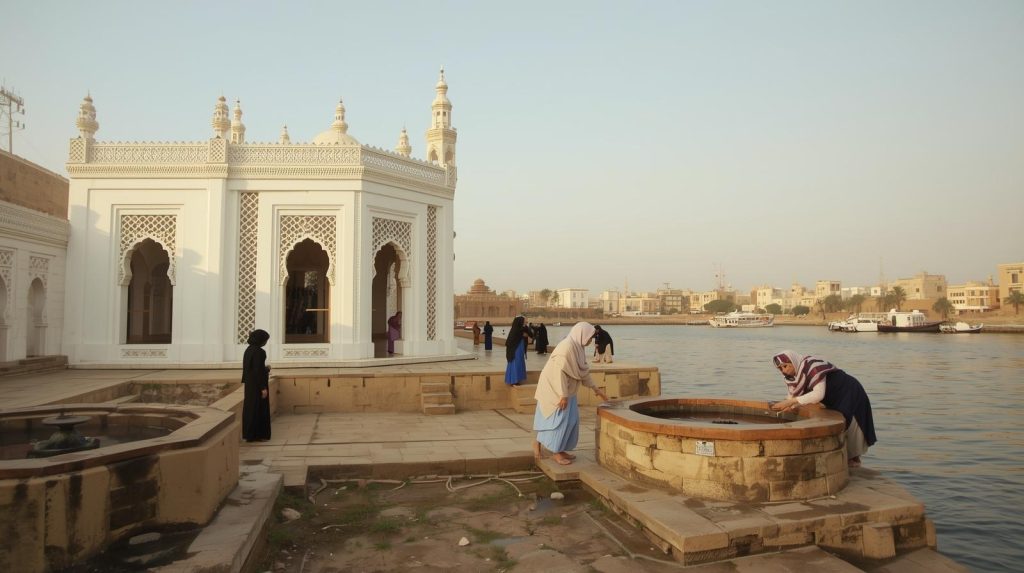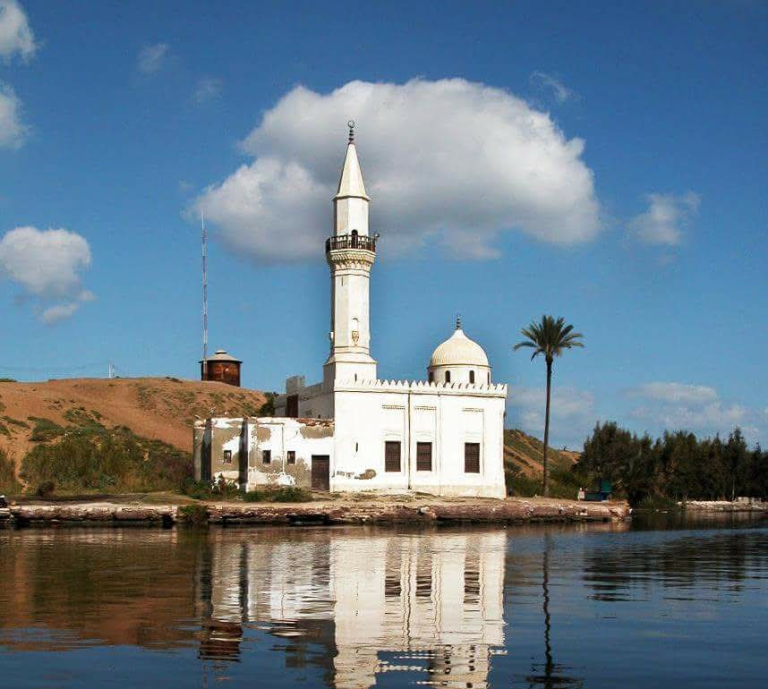On the edge of Rashid, where the Nile winds toward the Mediterranean, stands Abu Mandour Mosque, which has been part of the city’s life for over a thousand years. Visitors come for its beauty, its history, and the mysterious stories that continue to surround it.

The Mosque That Survived Nile Floods and Shifting Sands
For centuries, the Nile’s floods brought both life and destruction to the Delta. Entire villages were washed away, yet the Abu Mandour Mosque remained untouched. Even the sands that buried nearby hills never covered its walls. Locals still speak of this as a sign of divine protection — a mystery that sets the mosque apart.

The Story of Muhammad Abu Mandour, the Mystic Behind the Mosque
The mosque is named after Muhammad Abu Mandour, a mystic who came from Iraq in 991 AD. Tracing his lineage back to Imam Ali ibn Abi Talib, he became known in Rashid as Abu al-Nadr, “the man of sharp vision.”
He spent eleven years teaching and guiding the community before building the mosque on high ground overlooking the Nile. When he died in 1002 AD, he was buried inside, and his shrine remains the heart of the mosque today.

A Sacred Place for Women Seeking Blessings
Over the centuries, women have visited the mosque to seek blessings. Many believe the nearby well can help those longing for children, while the soil around the shrine is thought to cure certain ailments. Inside, the decorated wooden tomb of Abu Mandour, carved with Kufic and Diwani inscriptions, is a space where history and devotion continue to meet.

Abu Mandour Mosque as a Living Legacy of Faith and Mystery
With its Ottoman-style minaret, three doors, and centuries of resilience, the Abu Mandour Mosque has become more than just an architectural landmark. It carries with it a mystery that has never been fully explained, a legacy of faith and protection that continues to draw people to its doors.
WE ALSO SAID: Don’t Miss…Secrets of the Sunken City: A Journey Through Alexandria’s Underwater Treasures



